Dramatic, bizarre, ethereal, colorful, weird, and at times, downright jaw-dropping, northern lights photography is unquestionably a perfect subject. They are also challenging. As lights dance over the frozen winter landscape, it can be hard to put everything together to create successful northern lights photography. Living in Alaska has provided me more opportunity for northern lights photography than most, and yet it never grows tiresome. Every time the aurora appear they are different from the time before. Sometimes they are subtle, but wildly colorful. Other times they ripple across the sky so fast the northern lights pop like flashbulbs. More than once, I’ve had to stop clicking and just watch the curtains shift and dance. In fact, let that be my first tip if you are planning a northern lights photography shoot: occasionally just stop and watch. Seriously, put that camera down for a moment and relish the sight. OK, now let’s figure out how to make some photos. Here are some northern lights photography tips.
Northern Lights Photography Gear
Tripod. You need it. There is no faking this one. Get one, and use it. If it’s brutally cold (which, let’s face it, it probably will be) you’ll appreciate carbon over cold-channelling aluminum, but either will work. Bring it, use it, no excuses. Camera. I’ve seen beautiful pictures of the northern lights made with everything from good point and shoots to high end mirrorless and DSLRs. So don’t feel too restricted by your choice of camera. That said, a camera with low noise at high ISOs, is definitely preferable for northern lights photography. And though not absolutely necessary, the ability to change lenses, too, is a major asset. Lenses. As a general rule, you want wide and fast. The faster the better. My primary aurora lens is a 14mm f2.8, but I’m eyeing a 20mm f1.8 for the extra speed. All lenses will need to be manually focused, so make sure that is straight-forward. A variety of focal lengths, either in the form of a zoom, or a choice of lenses is also helpful. I’ve used everything from a 70-200 to my fixed 14mm to photograph the lights. Remote Release. Though not absolutely necessary, a cable or wireless release for your camera will help reduce camera shake when you click the shutter. A jiggly blur in the stars can ruin an otherwise good shot. If you don’t have a release, use the camera’s timer, (many have a 2-second delay setting). Keep in mind that using a timer rather than a release will slow you down. Clothing. Maybe I should have put this one at the top of the gear list, because it is probably the most important thing for a successful winter shoot of any kind. On some of the northern lights photography workshops I’ve led to the Brooks Range of northern Alaska, we spent hours outdoors, at night, photographing the aurora borealis in extreme cold. While there is always a warm refuge somewhere nearby, being prepared and comfortable in those conditions will extend your shooting hours, and result in better images.
Good clothing is not just important, but vital. I don’t want to go into too much detail here, but a thick down coat with a hood, down or synthetic fill pants, mittens, liner gloves, face masks, and warm hats should all be on your list. I do, however, want to take just a second to talk about footwear. Northern lights photography trips like those I lead to the Arctic are not the time to toy around with light winter boots. This is not the time for fashion. Pack boots, god-ugly bunny boots, mukluks, and other extreme-cold footwear, a couple sizes too big (to account for thick socks and toe warmers) are what you are looking for. Nothing will wreck a night of photography more quickly than painfully cold, or (please no) frost-bitten toes. Enough said.
The Day Before
Prefocus. Autofocus is wildly unreliable in the dark. Manual focus is the way to go. The first thing I do when I’m leading a photo workshop or tour is take my clients out in the daylight, and have them set their focus to some distant mountain top. After making sure their focus is tack sharp, I hand out small pieces of electrical tape and have everyone tape the focus ring in place so it won’t shift around accidentally. Come the excitement of the first aurora show, no one has to worry about messing with their focus points, or worse, find their shots heart-breakingly soft. A caveat: You still need to check your focus periodically. I’ve found that some lenses will shift their focus point slightly when there are extreme temperature changes. Pixel peep occasionally and adjust as necessary.
In the Field
Have patience. The aurora is a fickle lover, and she only appears when she wants. Even when the forecasts are coming together and everything seems set for success, the lights may take a while to appear, they may erupt when you don’t expect them to, or clouds may obscure the sky. It’s very important to plan for several nights to account for bad weather or uncooperative conditions. It’s not uncommon on a northern lights chase to spend a few hours, doing nothing at all, waiting. So when packing your photography equipment, add a book to your gear list, you might want it to fend off a bit of boredom. Patience however, usually pays off. On a recent aurora photo workshop, my students and I spent three hours sitting, waiting, chatting, drinking coffee, and looking helplessly at the sky. Then, with a suddenness that caught us off guard, the sky filled with curtains of green and purple aurora. We dashed for our cameras and tripods, and spent the next two hours making incredible images, hooting and hollering like we were at a fireworks display, as we admired the aurora light show above. It was worth the wait.
Camera Settings for Northern Lights Photography
In the days of film, and early days of digital, long exposures of 15 or 30 seconds for the aurora were the name of the game. This allowed the lights to appear bright and colorful, but details within the aurora, the pillars and beams, blurred away leaving behind an indistinct curtain. Technology has moved beyond this. You want the shortest shutter speed possible that allows sufficient brightness and low noise. ISOs in the 1600, 3200, or 6400 range are typical. For a moderately bright aurora display, I’ll usually start with a setting of f2.8, ISO 1600 or 3200, for 5 seconds. From there, depending on what the lights are doing, the moonlight, or other factors, I’ll adjust up and down. On the night I describe above, for about 10 minutes the lights brightened and started moving VERY fast. Sacrificing some noise, I went to ISO 12800, f2.8, and 1 second exposures. The shots needed a bit of noise reduction in post-processing, but I was able to capture every detail of the curtains. That sharpness and detail in the aurora borealis is what makes the images successful.
Northern Lights Photography Composition
When the aurora is hopping, your attention will shift to the sky and away from the foreground. You’ll have to concentrate, focus, and remember that composing northern lights photography is little different than any other sky-dominated landscape image. In the dark, a poorly framed image may not stand out the way it does in daylight, but I’ll guarantee that you’ll notice when the photos appear on your computer the next morning. Consider where you are, provide some context, avoid distractions, and compose carefully.
Where and When to Photograph the Northern Lights
Choosing the right location for a northern lights photography trip is a big decision. The aurora borealis can be seen around the planet’s northern regions. Scandinavian countries, Iceland, northern Canada, and of course Alaska, are popular destinations. While your budget and available time may limit you, it is important to consider the likely weather conditions, local tours, lodging and transportation options, and seasons. The aurora is primarily a winter phenomenon. In the far north, nights don’t get dark enough in the summer for the lights to appear. Here in Alaska, you can see the lights from late August or early September through mid-April, but prime time is late September through early April. Research weather patterns. Some months are more likely than others to have clear skies. In Alaska, March and April are the driest months with the best chance for clear skies, but other locations will differ. Moonlight is another thing to consider. While great lights can occur regardless of how bright the moon is, during the dark nights of a new moon, even low-grade aurora displays will appear more distinct. However, I love a little moonlight. It sheds light on the mountains and snow-covered trees, provides texture, and adds a remarkable warm light to many otherwise cool-toned images of the aurora.
Getting Help
Like any photography discipline, northern lights photography takes practice. This can make northern lights photography a frustrating pursuit for people new to it or with limited time. Organised northern lights photography workshops or tours, or private photo-guide services are a great way to assure some success. Even if you prefer to shoot northern lights photography independently, hiring a local expert for a night to get you started may help you dodge the usual pitfalls and find the best locations to shoot.
Conclusion
On a recent workshop in the Brooks Range, my clients and I drove a few miles north of the cabins where we were staying and pulled off the remote road. There were no visible lights in the sky, but we waited, patiently. I raised my camera to the windshield every now and again and made a test shot. My camera, I knew was far better at “seeing” the northern lights than my naked eye would be. Nothing. Nothing. Still nothing. And then…something. A pale green curtain. We grabbed cameras, extended tripod legs and climbed from the warmth of the car into the chill Arctic air. As we set up the aurora brightened, just a bit, finally visible to the naked eye. Our images started showing reds, and purples, and greens. Though extremely pale to the eye, our cameras were pulling a rainbow of colors from the quiet aurora display. Over the next few hours the lights grew brighter and brighter, eventually erupting into a display like few I’ve seen before. But the first images, the bright colors over the rugged peaks of the Brooks Range remain some of my favourites. The aurora will surprise you. And that is one of the best reasons I know to go and photograph the northern lights. Interested in some more interesting photography tips? Check out our adventure photography guide or article on photographing the moon!
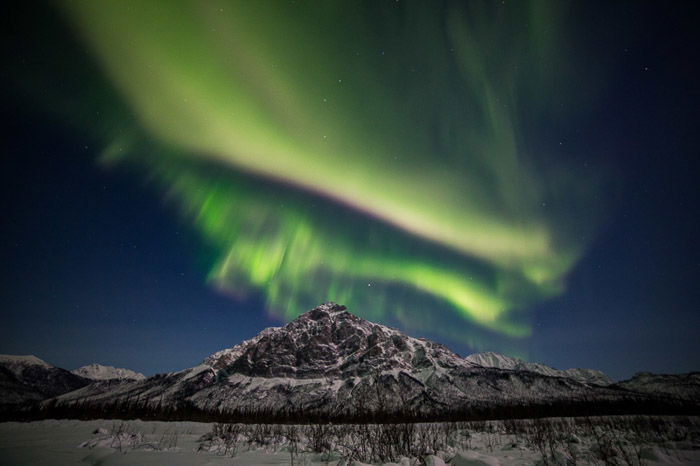

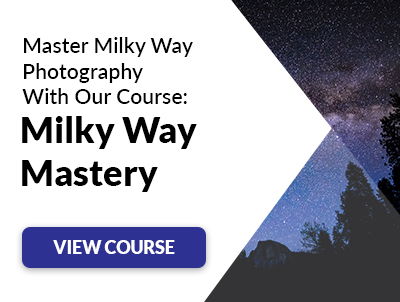

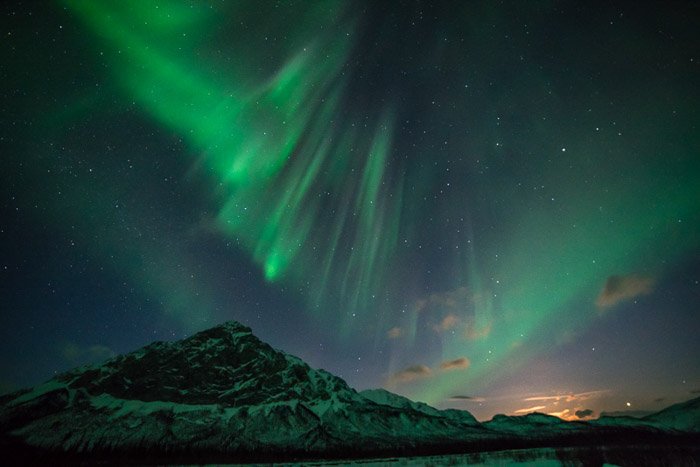
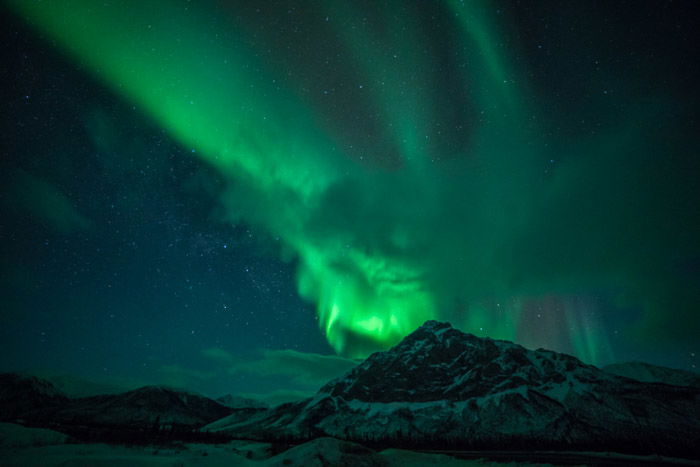
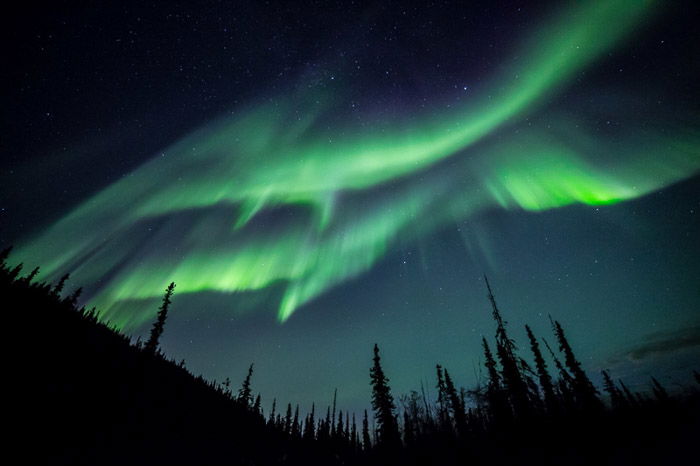
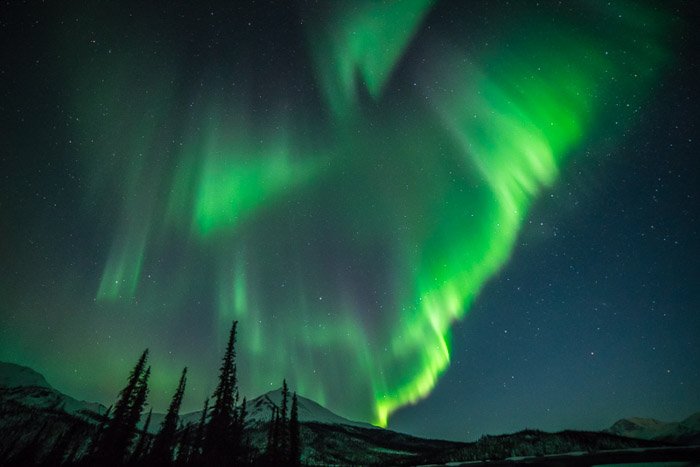
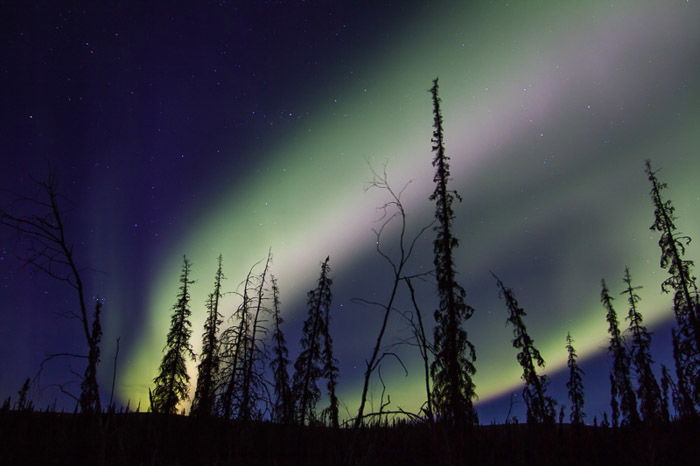
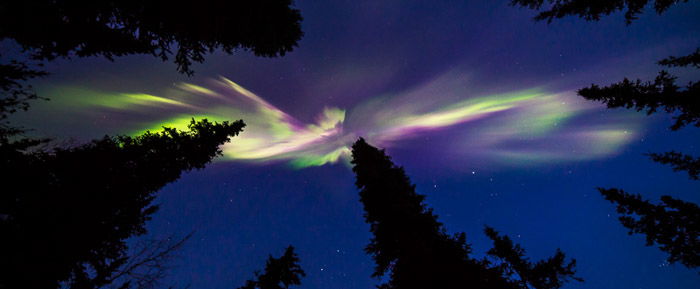
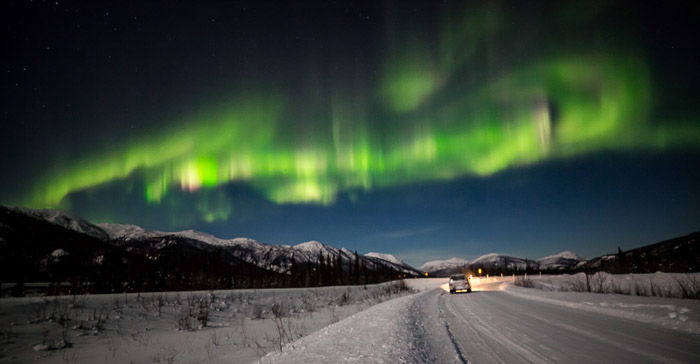
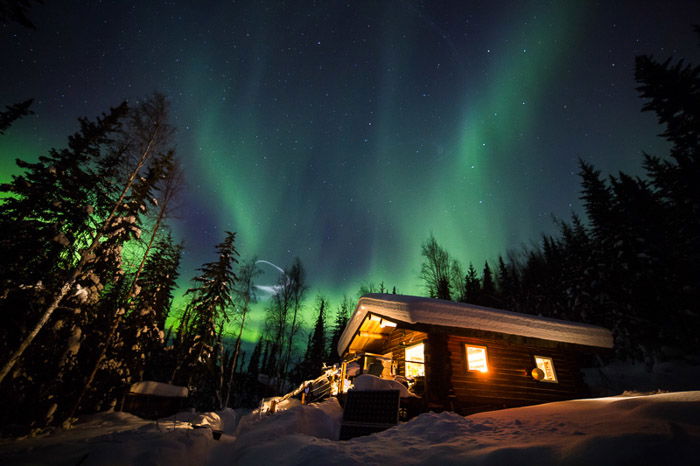
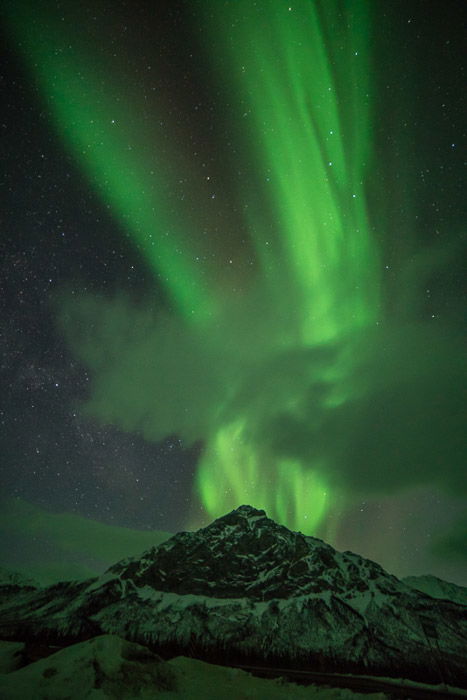
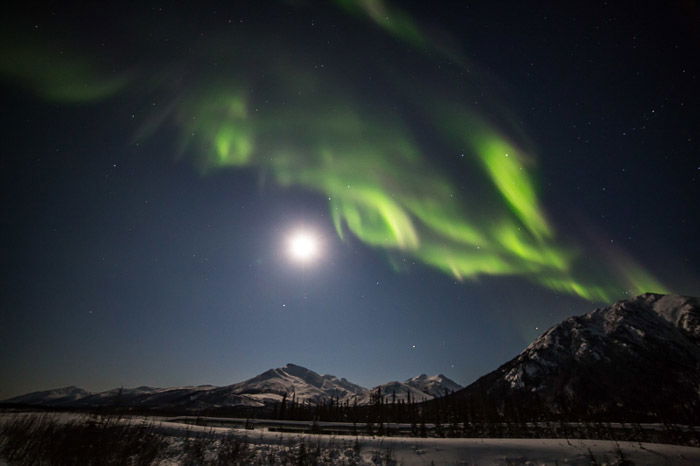
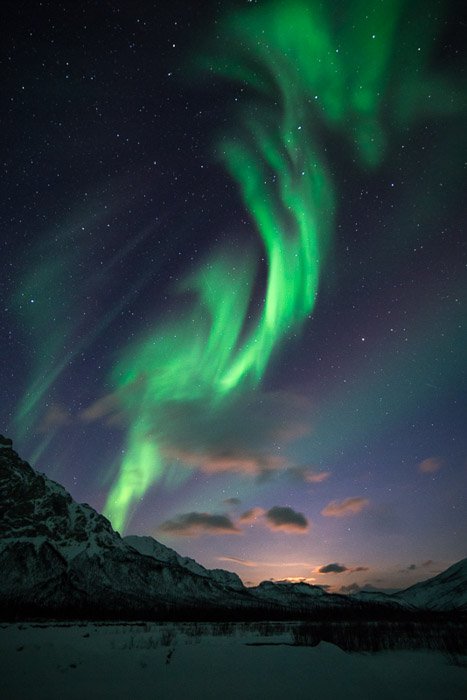
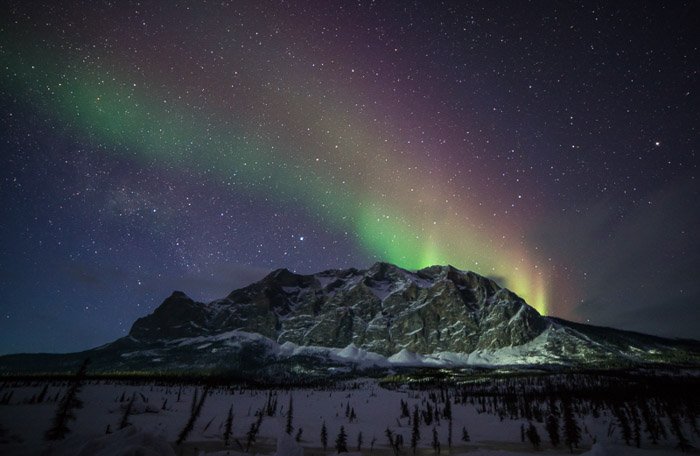
title: “Northern Lights Photography How To Shoot The Aurora Borealis " ShowToc: true date: “2023-01-14” author: “Cara Ross”
Dramatic, bizarre, ethereal, colorful, weird, and at times, downright jaw-dropping, northern lights photography is unquestionably a perfect subject. They are also challenging. As lights dance over the frozen winter landscape, it can be hard to put everything together to create successful northern lights photography. Living in Alaska has provided me more opportunity for northern lights photography than most, and yet it never grows tiresome. Every time the aurora appear they are different from the time before. Sometimes they are subtle, but wildly colorful. Other times they ripple across the sky so fast the northern lights pop like flashbulbs. More than once, I’ve had to stop clicking and just watch the curtains shift and dance. In fact, let that be my first tip if you are planning a northern lights photography shoot: occasionally just stop and watch. Seriously, put that camera down for a moment and relish the sight. OK, now let’s figure out how to make some photos. Here are some northern lights photography tips.
Northern Lights Photography Gear
Tripod. You need it. There is no faking this one. Get one, and use it. If it’s brutally cold (which, let’s face it, it probably will be) you’ll appreciate carbon over cold-channelling aluminum, but either will work. Bring it, use it, no excuses. Camera. I’ve seen beautiful pictures of the northern lights made with everything from good point and shoots to high end mirrorless and DSLRs. So don’t feel too restricted by your choice of camera. That said, a camera with low noise at high ISOs, is definitely preferable for northern lights photography. And though not absolutely necessary, the ability to change lenses, too, is a major asset. Lenses. As a general rule, you want wide and fast. The faster the better. My primary aurora lens is a 14mm f2.8, but I’m eyeing a 20mm f1.8 for the extra speed. All lenses will need to be manually focused, so make sure that is straight-forward. A variety of focal lengths, either in the form of a zoom, or a choice of lenses is also helpful. I’ve used everything from a 70-200 to my fixed 14mm to photograph the lights. Remote Release. Though not absolutely necessary, a cable or wireless release for your camera will help reduce camera shake when you click the shutter. A jiggly blur in the stars can ruin an otherwise good shot. If you don’t have a release, use the camera’s timer, (many have a 2-second delay setting). Keep in mind that using a timer rather than a release will slow you down. Clothing. Maybe I should have put this one at the top of the gear list, because it is probably the most important thing for a successful winter shoot of any kind. On some of the northern lights photography workshops I’ve led to the Brooks Range of northern Alaska, we spent hours outdoors, at night, photographing the aurora borealis in extreme cold. While there is always a warm refuge somewhere nearby, being prepared and comfortable in those conditions will extend your shooting hours, and result in better images.
Good clothing is not just important, but vital. I don’t want to go into too much detail here, but a thick down coat with a hood, down or synthetic fill pants, mittens, liner gloves, face masks, and warm hats should all be on your list. I do, however, want to take just a second to talk about footwear. Northern lights photography trips like those I lead to the Arctic are not the time to toy around with light winter boots. This is not the time for fashion. Pack boots, god-ugly bunny boots, mukluks, and other extreme-cold footwear, a couple sizes too big (to account for thick socks and toe warmers) are what you are looking for. Nothing will wreck a night of photography more quickly than painfully cold, or (please no) frost-bitten toes. Enough said.
The Day Before
Prefocus. Autofocus is wildly unreliable in the dark. Manual focus is the way to go. The first thing I do when I’m leading a photo workshop or tour is take my clients out in the daylight, and have them set their focus to some distant mountain top. After making sure their focus is tack sharp, I hand out small pieces of electrical tape and have everyone tape the focus ring in place so it won’t shift around accidentally. Come the excitement of the first aurora show, no one has to worry about messing with their focus points, or worse, find their shots heart-breakingly soft. A caveat: You still need to check your focus periodically. I’ve found that some lenses will shift their focus point slightly when there are extreme temperature changes. Pixel peep occasionally and adjust as necessary.
In the Field
Have patience. The aurora is a fickle lover, and she only appears when she wants. Even when the forecasts are coming together and everything seems set for success, the lights may take a while to appear, they may erupt when you don’t expect them to, or clouds may obscure the sky. It’s very important to plan for several nights to account for bad weather or uncooperative conditions. It’s not uncommon on a northern lights chase to spend a few hours, doing nothing at all, waiting. So when packing your photography equipment, add a book to your gear list, you might want it to fend off a bit of boredom. Patience however, usually pays off. On a recent aurora photo workshop, my students and I spent three hours sitting, waiting, chatting, drinking coffee, and looking helplessly at the sky. Then, with a suddenness that caught us off guard, the sky filled with curtains of green and purple aurora. We dashed for our cameras and tripods, and spent the next two hours making incredible images, hooting and hollering like we were at a fireworks display, as we admired the aurora light show above. It was worth the wait.
Camera Settings for Northern Lights Photography
In the days of film, and early days of digital, long exposures of 15 or 30 seconds for the aurora were the name of the game. This allowed the lights to appear bright and colorful, but details within the aurora, the pillars and beams, blurred away leaving behind an indistinct curtain. Technology has moved beyond this. You want the shortest shutter speed possible that allows sufficient brightness and low noise. ISOs in the 1600, 3200, or 6400 range are typical. For a moderately bright aurora display, I’ll usually start with a setting of f2.8, ISO 1600 or 3200, for 5 seconds. From there, depending on what the lights are doing, the moonlight, or other factors, I’ll adjust up and down. On the night I describe above, for about 10 minutes the lights brightened and started moving VERY fast. Sacrificing some noise, I went to ISO 12800, f2.8, and 1 second exposures. The shots needed a bit of noise reduction in post-processing, but I was able to capture every detail of the curtains. That sharpness and detail in the aurora borealis is what makes the images successful.
Northern Lights Photography Composition
When the aurora is hopping, your attention will shift to the sky and away from the foreground. You’ll have to concentrate, focus, and remember that composing northern lights photography is little different than any other sky-dominated landscape image. In the dark, a poorly framed image may not stand out the way it does in daylight, but I’ll guarantee that you’ll notice when the photos appear on your computer the next morning. Consider where you are, provide some context, avoid distractions, and compose carefully.
Where and When to Photograph the Northern Lights
Choosing the right location for a northern lights photography trip is a big decision. The aurora borealis can be seen around the planet’s northern regions. Scandinavian countries, Iceland, northern Canada, and of course Alaska, are popular destinations. While your budget and available time may limit you, it is important to consider the likely weather conditions, local tours, lodging and transportation options, and seasons. The aurora is primarily a winter phenomenon. In the far north, nights don’t get dark enough in the summer for the lights to appear. Here in Alaska, you can see the lights from late August or early September through mid-April, but prime time is late September through early April. Research weather patterns. Some months are more likely than others to have clear skies. In Alaska, March and April are the driest months with the best chance for clear skies, but other locations will differ. Moonlight is another thing to consider. While great lights can occur regardless of how bright the moon is, during the dark nights of a new moon, even low-grade aurora displays will appear more distinct. However, I love a little moonlight. It sheds light on the mountains and snow-covered trees, provides texture, and adds a remarkable warm light to many otherwise cool-toned images of the aurora.
Getting Help
Like any photography discipline, northern lights photography takes practice. This can make northern lights photography a frustrating pursuit for people new to it or with limited time. Organised northern lights photography workshops or tours, or private photo-guide services are a great way to assure some success. Even if you prefer to shoot northern lights photography independently, hiring a local expert for a night to get you started may help you dodge the usual pitfalls and find the best locations to shoot.
Conclusion
On a recent workshop in the Brooks Range, my clients and I drove a few miles north of the cabins where we were staying and pulled off the remote road. There were no visible lights in the sky, but we waited, patiently. I raised my camera to the windshield every now and again and made a test shot. My camera, I knew was far better at “seeing” the northern lights than my naked eye would be. Nothing. Nothing. Still nothing. And then…something. A pale green curtain. We grabbed cameras, extended tripod legs and climbed from the warmth of the car into the chill Arctic air. As we set up the aurora brightened, just a bit, finally visible to the naked eye. Our images started showing reds, and purples, and greens. Though extremely pale to the eye, our cameras were pulling a rainbow of colors from the quiet aurora display. Over the next few hours the lights grew brighter and brighter, eventually erupting into a display like few I’ve seen before. But the first images, the bright colors over the rugged peaks of the Brooks Range remain some of my favourites. The aurora will surprise you. And that is one of the best reasons I know to go and photograph the northern lights. Interested in some more interesting photography tips? Check out our adventure photography guide or article on photographing the moon!















